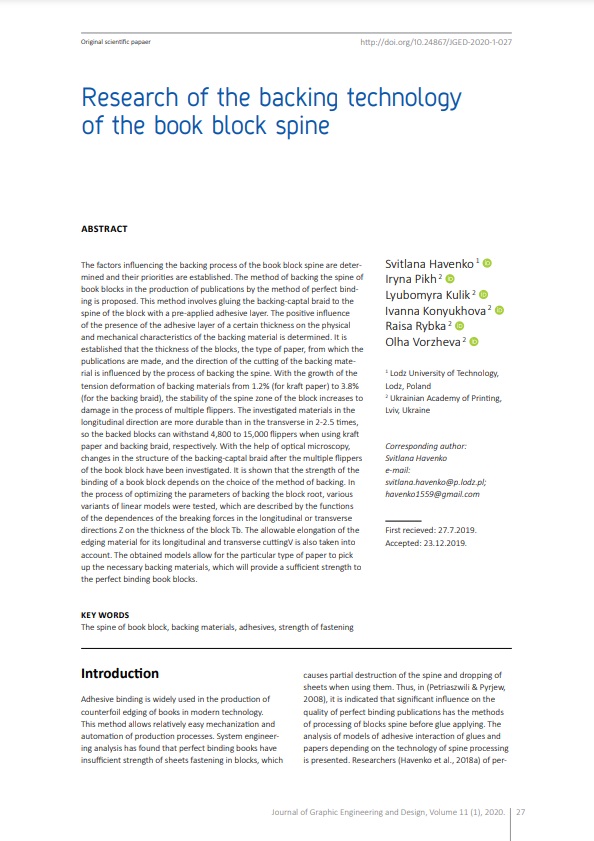
Published 2020-06-01
abstract views: 227 // Full text article (PDF): 165
Keywords
- The spine of book block,
- backing materials,
- adhesives,
- strength of fastening
How to Cite
Copyright (c) 2020 © 2020 Authors. Published by the University of Novi Sad, Faculty of Technical Sciences, Department of Graphic Engineering and Design. This article is an open access article distributed under the terms and conditions of the Creative Commons Attribution license 3.0 Serbia.

This work is licensed under a Creative Commons Attribution 3.0 Unported License.
Abstract
-
The factors influencing the backing process of the book block spine are determined and their priorities are established. The method of backing the spine of book blocks in the production of publications by the method of perfect binding is proposed. This method involves gluing the backing-captal braid to the spine of the block with a pre-applied adhesive layer. The positive influence of the presence of the adhesive layer of a certain thickness on the physical and mechanical characteristics of the backing material is determined. It is established that the thickness of the blocks, the type of paper, from which the publications are made, and the direction of the cutting of the backing material is influenced by the process of backing the spine. With the growth of the tension deformation of backing materials from 1.2% (for kraft paper) to 3.8% (for the backing braid), the stability of the spine zone of the block increases to damage in the process of multiple flippers. The investigated materials in the longitudinal direction are more durable than in the transverse in 2-2.5 times, so the backed blocks can withstand 4,800 to 15,000 flippers when using kraft paper and backing braid, respectively. With the help of optical microscopy, changes in the structure of the backing-captal braid after the multiple flippers of the book block have been investigated. It is shown that the strength of the binding of a book block depends on the choice of the method of backing. In the process of optimizing the parameters of backing the block root, various variants of linear models were tested, which are described by the functions of the dependences of the breaking forces in the longitudinal or transverse directions Z on the thickness of the block Tb. The allowable elongation of the edging material for its longitudinal and transverse cuttingV is also taken into account. The obtained models allow for the particular type of paper to pick up the necessary backing materials, which will provide a sufficient strength to the perfect binding book blocks.


